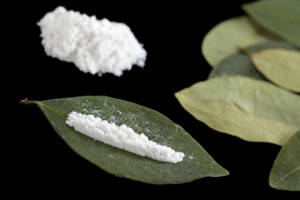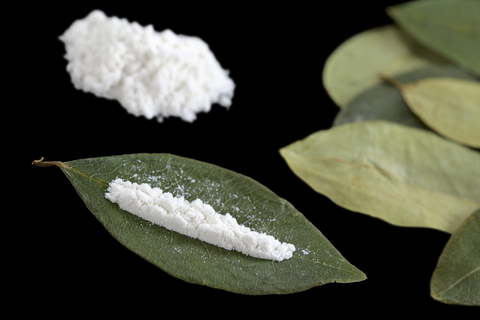
Writing for Time back in 2010, Maia Szalavitz described how the connection between levamisole and cocaine first came to light. In the summer of 2008, a man and a woman in their twenties were both admitted to a Canadian hospital with fevers, flu-like symptoms and dangerously low white blood cell counts. Although the symptoms were consistent with agranulocytosis, at the time it was only known as rare disease found in chemotherapy patients and others taking certain antipsychotic medications. Neither of the Canadian patients fit that profile. But they had one thing in common: they used cocaine. A search of the medical literature at the time didn’t find any studies linking agranulocytosis with cocaine.
But in April of 2008, a New Mexico lab had notified the New Mexico Department of Health (NMDOH) of a cluster of unexplained agranulocytosis cases in the preceding two months. The NMDOH launched their own investigation and “identified cocaine use as a common exposure in 11 cases of otherwise unexplained agranulocytosis.” In November of 2008, the NMDOH investigation and the Canadian public health officials connected with one another. In January of 2009 the NMDOH posted a notification of its findings on the CDC’s Epidemic Information Exchange. In a still separate investigation, public health officials in Seattle Washington identified 10 cases of agranulocytosis among persons with a history of cocaine use between April and November of 2009.
In the midst of this growing public health mystery, two high profile overdose deaths occurred. Celebrity disk jockey Adam Goldstein, better known as DJ AM, died of an overdose of cocaine and prescription drugs in September of 2009. Among the drugs found in his system was levamisole. Goldstein had been a fixture on the A-list party circuit and was a well-known cocaine user. Ted Koppel’s son Andrew accidentally overdosed in June of 2010. The medical examiner found a combination of drugs in his system at the time of death, including cocaine and levamisole. It was likely that neither men knew they had been snoorting any levamisole.
SAMHSA, the Substance Abuse and Mental Health Administration, posted a public health alert the same month of Adam’s death warning of the dangers of levamisole. Citing information from the DEA, the report said the percentage of cocaine specimens containing levamisole tested in its labs has steadily risen since 2002. In July of 2009, 70% of the illicit cocaine tested contained levamisole. They said there had been around 20 cases agranulocytosis, including two deaths associated with cocaine adulterated with levamisole.
Levamisole is used in veterinary medicine as a deworming agent for cattle, sheep and pigs. In the past, it was approved for use with humans to treat autoimmune diseases and cancer. It’s been increasingly found as an additive to cocaine in samples tested worldwide. It has some serious side effects like a weakened immune system, painful sores and wounds that don’t heal—the above noted condition called agranulocytosis. Left untreated, it could lead to death. Here is a short video on Adam’s death and some pictures of individuals with agranulocytosis from cocaine use. Don’t watch it if you have a weak stomach.
A recent case report in the British Medical Journal described a 42 year-old woman who came to an outpatient clinic in Britain suffering from vasculitis, an inflammation of the blood vessels. She had severe joint pain, muscle pain, intermittent abdominal pain and lesions. Initially, she repeatedly denied any cocaine use, but eventually admitted using it in the past. Hair testing done was positive for her recent use of levamisole-contaminated cocaine.
Erowid, a pro-drug website cautioned its readers to be honest with healthcare providers about their illicit substance use when they seek treatment for conditions like high fever that could be from levamisole to improve their chances of proper diagnosis and quick recovery. In other words, don’t do what the woman in the BMJ case report did. There was an informative article there on levamisole that noted how widespread levamisole-tainted cocaine is: Australia, Canada, Colombia, France, Guyana, Italy, Jamaica, the Netherlands, Spain, Switzerland, the United Kingdom, and the United States. Speculating why cocaine is adulterated with levamisole, Erowid said:
According to the DEA, levamisole–as well as other adulterants–is apparently present in some shipments of cocaine intercepted before they are broken up for further distribution to consumers. Considering that, in one batch, only 6% by weight of the total product sold as cocaine was levamisole, it seems possible it is more than simply a bulking agent. One theory is that levamisole or other adulterants boost the effects of cocaine, permitting material to pass for higher-quality product despite additional cuts made down the line. Another theory is that levamisole or other adulterants are added as chemical signatures used to track distribution of material.It may be that levamisole has been used because it has similar solubility properties to cocaine and therefore is difficult to remove and has not previously been considered a serious health hazard. As of October 1, 2009, there is no definitive answer as to why it is used as a cocaine adulterant.
Kim Gosmer, a chemist specializing in narcotic samples at the Department of Forensic Medicine as Aarhus University in Denmark speculated that levamisole-tainted cocaine originated from South America. Cited in a Vice article, he said that forensic chemists are finding levamisole-tainted cocaine all over world, increasingly from every level of distribution. Gosmer believed this suggested the adulterant is added to the cocaine in South America before it is exported. “So the question is: Why bother diluting high-grade cocaine that costs almost nothing to produce (compared to street prices) with a compound that’s more expensive than other adulterants and diluents?”
He went on to say that the amount of levamisole found in cocaine is typically not very large. So it’s not added strictly to cut the cocaine. But one of its metabolites called aminorex has amphetamine-like properties. Another possibility is that levasimole increases the amount of dopamine released by glutamate levels in the brain. “Levasimole could potentially increase the effect of cocaine through its release of dopamine.”
Casual cocaine users purportedly don’t have to worry; but habitual users should worry. With upwards of 70% of the cocaine from around the world testing positive for levamisole, the typical cocaine user will snort some levamisole sooner or later. SAMHSA warned levamisole was a dangerous substance and that agranulocytosis was a very serious illness that needed to be treated at a hospital. Remember the similar warning given by Erowid. So if you use cocaine, watch out for:
- high fever, chills, or weakness
- swollen glands
- painful sores (mouth, anal)
- any infection that won’t go away or gets worse very fast, including sore throat or mouth sores -skin infections, abscesses -thrush (white coating of the mouth, tongue, or throat) -pneumonia (fever, cough, shortness of breath).”
It used to be that you could trust drug dealers to only cut their cocaine and heroin with inert ingredients. It seems that the cost of snorting cocaine is going up in more ways than one.





